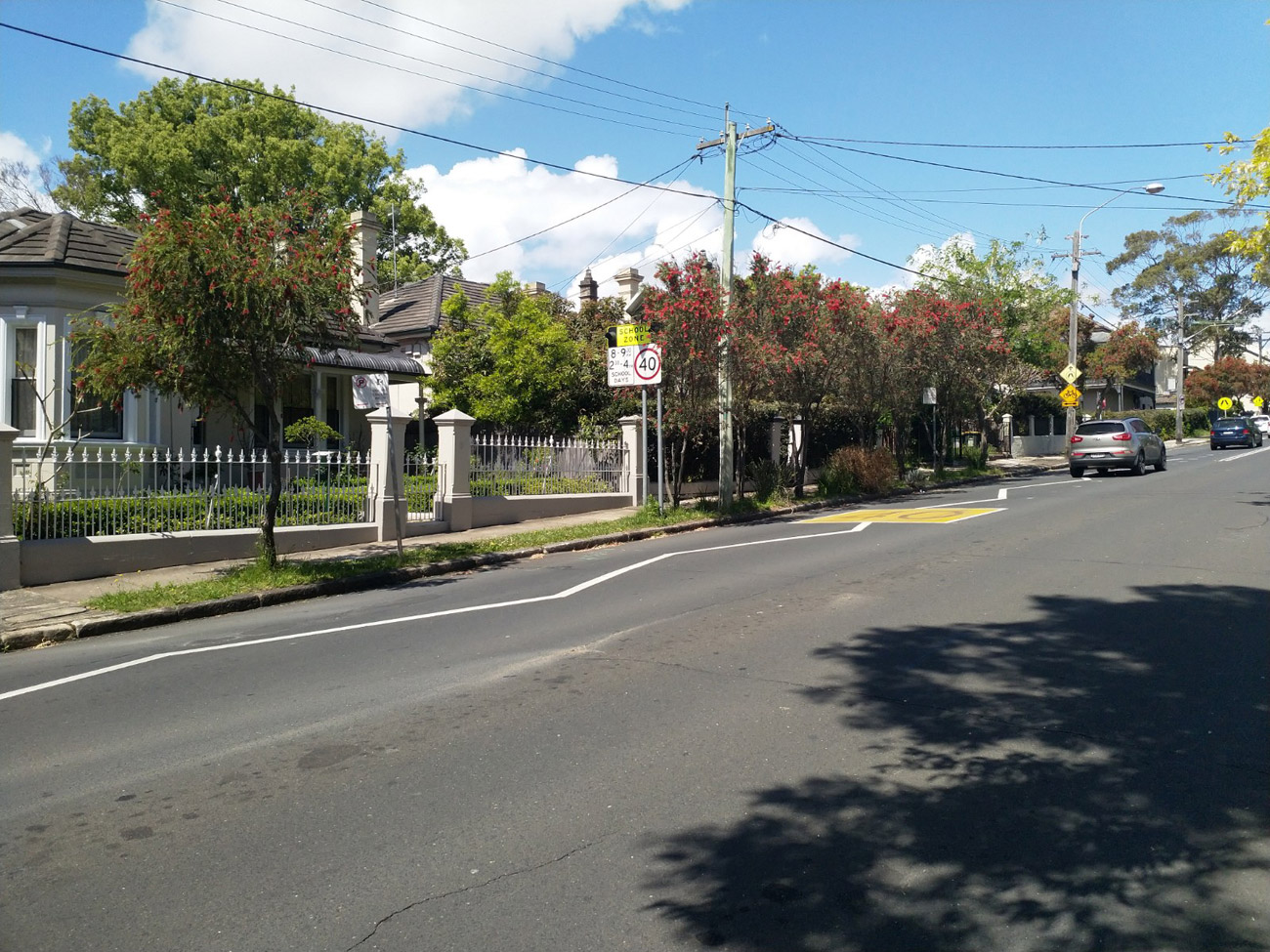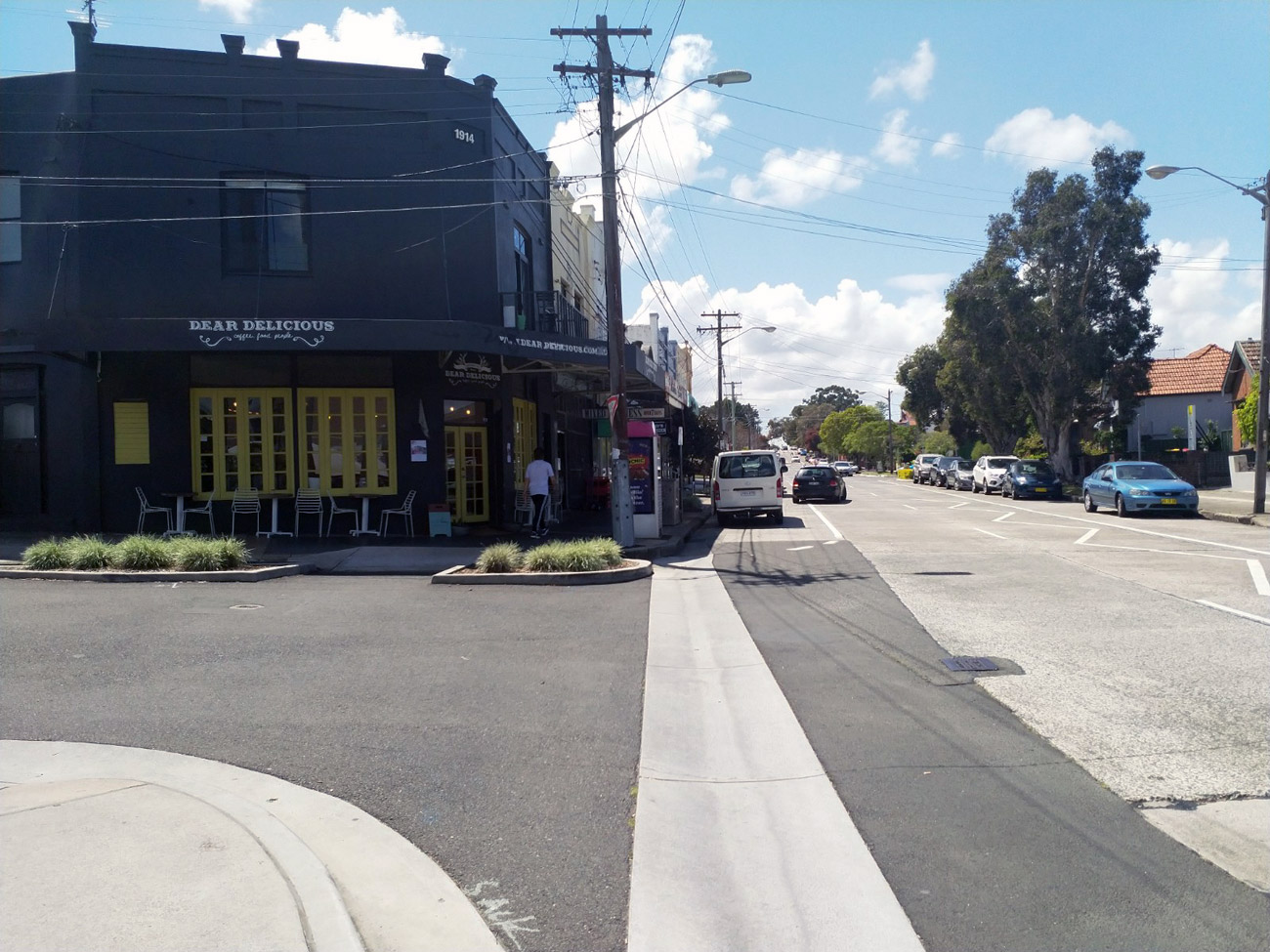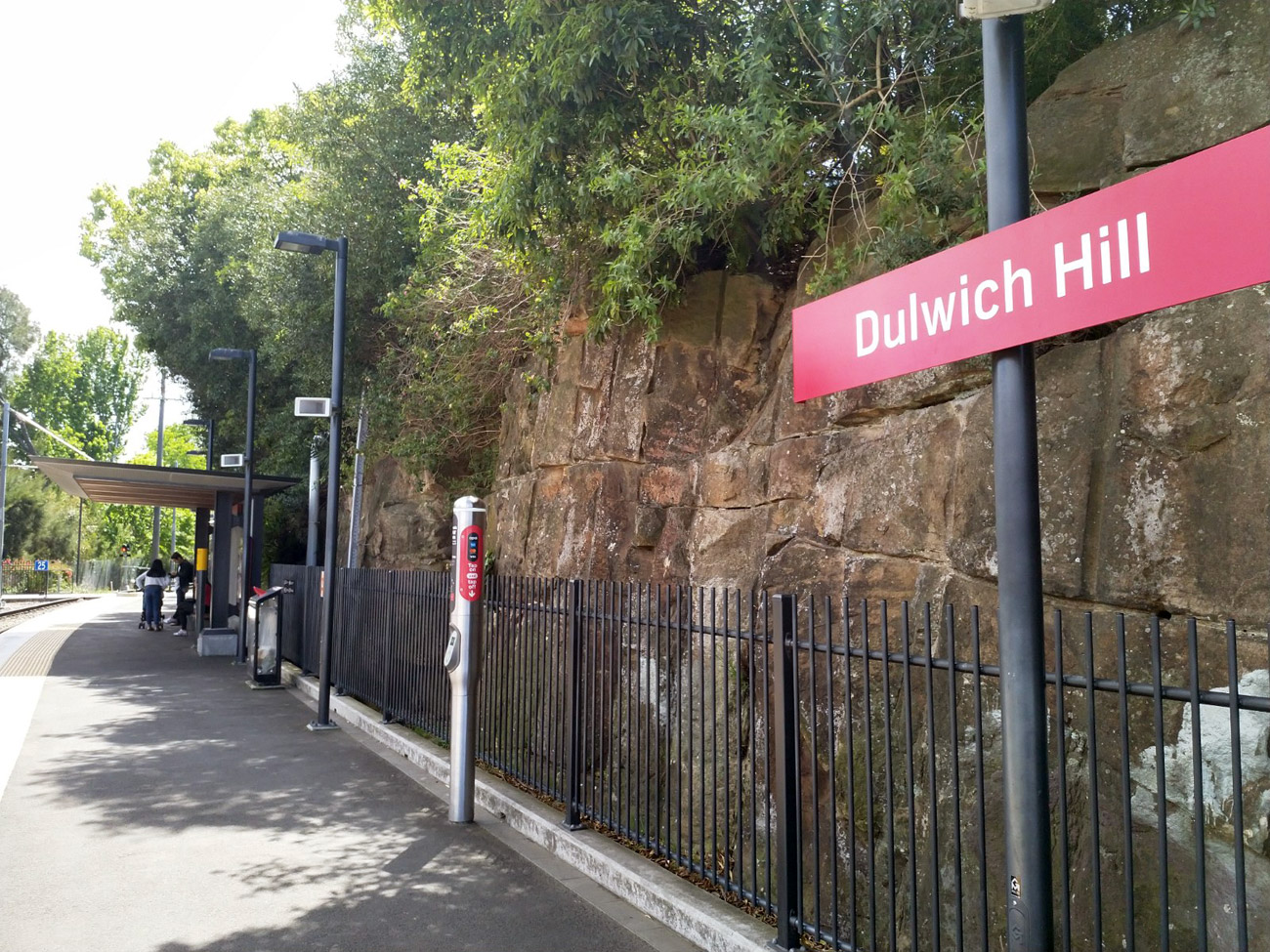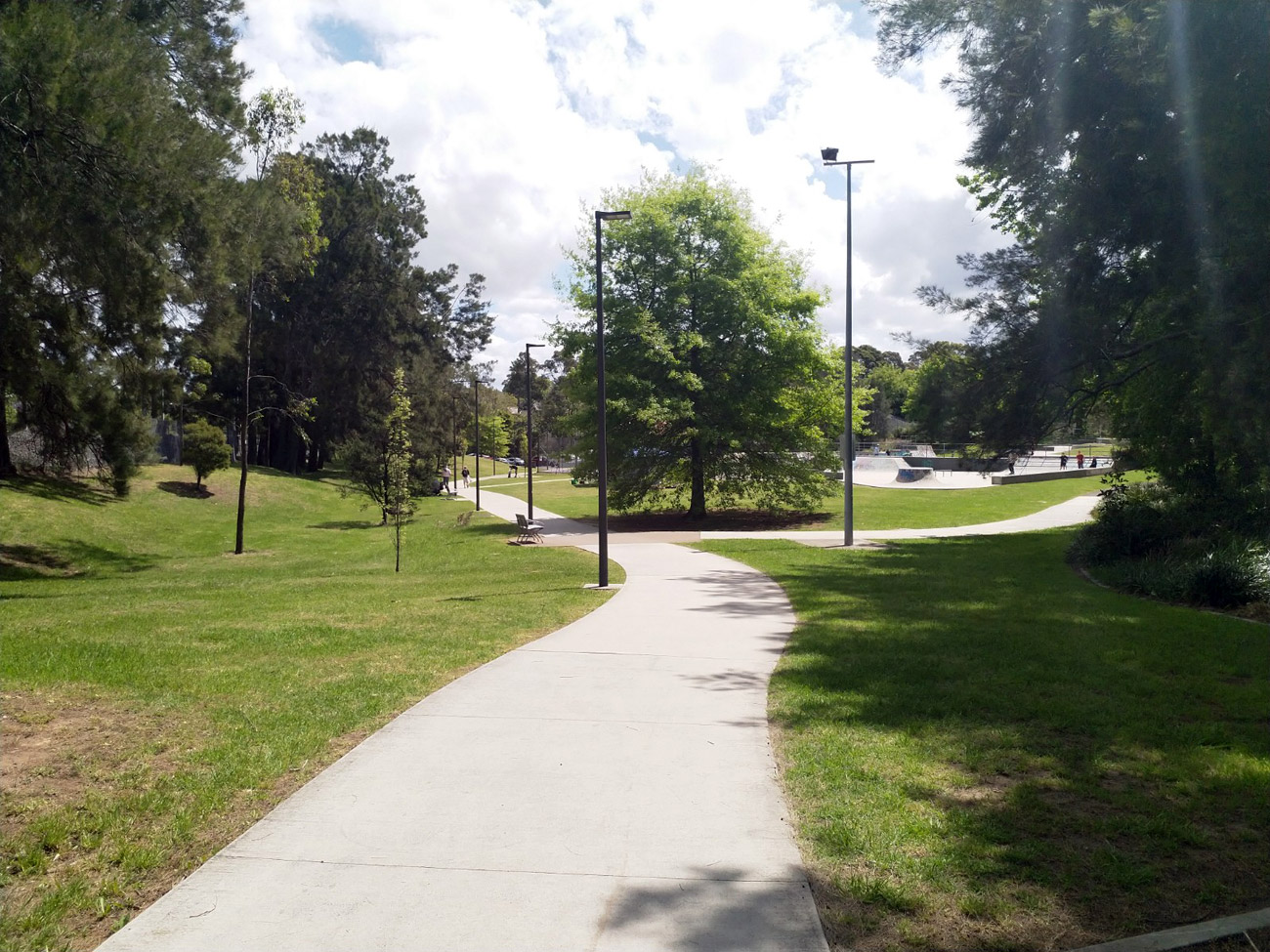Lovely and convenient, formerly-hidden-gem of the Inner West is not so hidden any more.
 Summary: A heaping of public transport options combine with gorgeous back streets, a lovely little cafe scene, and a huge dose of greenery to make Dulwich Hill one of the highlights of Sydney’s Inner West. It’s home to some wonderful architecture and a range of home types to choose from, as well as plenty of flora-rich public spaces that make for a great atmosphere. Parts of it could use a fresh coat of paint and don’t convey the best first impression which is entirely deceiving to how nice it truly is, and rising prices have taken it outside of its former “sleeper” status, however.
Summary: A heaping of public transport options combine with gorgeous back streets, a lovely little cafe scene, and a huge dose of greenery to make Dulwich Hill one of the highlights of Sydney’s Inner West. It’s home to some wonderful architecture and a range of home types to choose from, as well as plenty of flora-rich public spaces that make for a great atmosphere. Parts of it could use a fresh coat of paint and don’t convey the best first impression which is entirely deceiving to how nice it truly is, and rising prices have taken it outside of its former “sleeper” status, however.
Key stats
Region: Inner West
Population: 14,500
Postcode: 2203
Ethnic Breakdown: English 19.4%, Australian 16.4%, Irish 9.5%, Scottish 6.2%, Greek 5.2%
Time to CBD (Public Transport): 20 minutes
Time to CBD (Driving): 20 minutes
Nearest Train Station: Dulwich Hill
Highlights/attractions: Jack Shanahan Reserve, heritage homes, boutique cafes
Ideal for: Professionals, small families, retirees
On the whole, Dulwich Hill could be considered one of the prettiest purely-residential suburbs in Sydney.
Don’t let initial impressions deceive you if arriving from the heavy rail side – if only a little more effort was taken to cover up some of the “visual pollution” here, you could easily argue that this is otherwise Sydney’s most gorgeous residential streetscape.

Initial impressions gained from around its main heavy rail station contrast sharply with the majority of the suburb as a whole; there’s graffiti in multiple locations in this area, and a fair bit of trash in the streets. Yes, we know that the Inner West is still supposed to be a little “gritty” despite gentrification, but this takes things a little too far.
Basically: don’t judge this particular book by its initial cover, as the rest of the suburb is wonderful.

The rest of the Dulwich Hill is home to some of the most charming streets in greater Sydney. For starters, it’s home to a handful of the best suburban parks that the Inner West has to offer – they’re massive, well-kept, and offer a host of amenities that other neighbouring suburbs can’t hope to match.

These large public spaces help foster a sense of community that many other nearby suburbs don’t (looking at you, Lewisham), and as a result Dulwich Hill feels more welcoming than many of its peers.
The spacious Jack Shanahan Reserve near the light rail station is an obvious standout – with its extended skate park a boon for kids and enthusiasts – but Johnston and Hoskins parks further to the north are both great as well.
Out and About
Kudos goes to local authorities who are keeping them in such good condition, as they’re something locals with both kids and pets alike can take advantage of to the fullest. Add in its public sporting and recreation grounds, and this is a suburb in which you’ll want to be spending a lot of time outdoors.
This green-leaning atmosphere extends to Dulwich Hill’s streets as a whole. Largely wide and leafy, this is a tree-heavy suburb at its core that’s wonderful to walk through.
The trees contrast brilliantly with its mostly older, heritage-feeling houses to make for a great streetscape. There’s not much in the way of modern construction here outside of a few newer apartment blocks, and its buildings are heavy on the charming brown and red-brick stylings of Sydney past.
Some of the gardens here are also spectacular, and Dulwich Hill is flora-rich as a whole, adding an extra layer of colour to the proceedings.
There’s an excellent variety of housing types on offer, too. Outside of its more expensive, turreted mid-sized Art Deco homes, it boasts plenty of high-density apartment blocks and handfuls of terraces as well – basically, no matter your stage of life or housing requirements, Dulwich Hill mostly has something to fit.
There’s not too many blocks with large yards, but this is more of a fact of Inner West living in general than a knock on Dulwich Hill in particular.
All this comes without feeling too pretentious or hipster, too. Its working class origins are still clearly here, with smash repairs and auto shops and some light industry prevalent, with a splash of gentrification on top. Its layer of past Greek heritage can also still be felt here as well, and adds an extra exotic dash to the proceedings.
“There’s no denying that, outside of its slight lack of amenities for shopping, Dulwich Hill has pretty much everything one could want in Inner West Sydney living.”
This diversity of backgrounds becomes more obvious in the suburb’s south-western portion, where a higher concentration of lower-income, high-density apartment blocks are clustered as well. It’s a drastically different atmosphere to the rest of the suburb, and a fair bit dirtier, but offers more affordable accommodation for those who aren’t as cashed up.
This gentrification of recent years has lead to a burgeoning cafe and small-scale restaurant scene that is full of charm.
There’s a range of communal-feeling local cafes oriented around street dining, and a friendly buzz that makes it feel a little more lively than the average residential-heavy suburb in this part of Sydney. Small-scale bars and drinking spots have popped up, too, which helps round out its overall offerings.

It’s mostly limited to cafes and some restaurants and bars, however, as Dulwich Hill has no real large scale shopping or big-box retail scene to speak of. There’s also little nightlife, and the demographic here trends older and more family-heavy as well.
There’s an IGA for daily supermarket needs as well as charming little delis and the like, but neither of the bigger chains have a presence here, and there’s not much in the way of more recognised fashion shopping or other daily services such as larger scale medical. Neighbouring Marrickville has more to offer so a quick trip isn’t too much of a hassle, but it’s somewhat lacking nonetheless.
Dulwich Hill is also generally quite peaceful and quiet at street-level, however it does cop (a little of) the aircraft noise that some of the suburbs this close to the airport have to deal with.
And that’s a reasonable price to pay given just how damn convenient the suburb is. It’s absolutely decked-out as far as public transport goes, with not only the aforementioned Dulwich Hill heavy rail station, but also multiple light rail connections and bus routes passing throughout.
Take your pick of enjoying a 20 minute public transport commute into the city, or jump in the car and hop on New Canterbury Road for major arterial access elsewhere. Its position near Marrickville (Vietnamese food, bit more shopping, breweries), Ashfield (Asian food, shopping), and Petersham (mix of Greek and Portuguese food in particular) means that you’ve got a host of variety right on your doorstep as well.

Price, then, is fast becoming one of the few downsides of a potential life in Dulwich Hill. Many have caught on to its combination of desirable traits, and as a result – even despite its huge range of housing options – acquiring a property here is far from cheap.
Don’t expect to grab yourself even a smaller 2-bedroom home for anything under the $1.2 million mark, with most freestanding homes going for much higher.
The high concentration of older apartments means that its rental market is somewhat healthier, with a reasonable (given its location and pluses) weekly price for a 2-bedder hovering around the $500 mark.
The Verdict
There’s no denying that, outside of its slight lack of amenities for big-box shopping, Dulwich Hill has pretty much everything one could want in Inner West Sydney living. Its streets are some of the most character-rich and well-kept in the region, and its parks are a shining example of urban planning and maintenance done right.
Likewise, its abundance of options for getting around help set it apart from some of the other similarly-located suburbs in the area. Its communal aspect, access to good schools, and generally great outdoor atmosphere will no doubt be appealing to families and pet owners, and retirees who don’t want to isolate themselves too far from Sydney city can also find plenty to like here as well.
Younger couples or partygoers who want a little more nightlife, action or “energy” may want to look elsewhere and it’s certainly not the cheapest suburb in the world for those looking to buy a place – but given how desirable it is, can you really blame the residents here for not wanting to part with their properties?
Oh, and c’mon authorities responsible – just do something about that damn train station area’s upkeep, as first impressions do matter and could unnecessarily give people the wrong impression.
Editor’s note: we’ve added some additional imagery and re-worded some sections for clarification since initial publication.










October 14, 2019
Hi Matt, good review but you totally missed the mark on the nightlife. Butchers Brew Bar puts on top quality live music 6-7 nights a week – the best musicians in Sydney for a v modest cover. Great little bar to hang out before & after the band’s too.
October 14, 2019
Hi Matt,
Thanks for your Dulwich Hill review. What are you referring to with your comment “visual polution’ ??
Also re the train station. Please do research as ALL Sydney Railway Stations are operated and manage under Sydney Trains via NSW Transport. gov.au.
“Local authorities” has zero to do with Sydney Railway stations or rail service.
one important omission is Dulwich Hill is an Historical Suburb with many properties, buildings, homes are Heritage Listed.
Thank You for the inclusion but would love you to do more research via the local / Marrickville Heritage Society on what could have been a complimentary article.
Thank You,
Cherie – Admin @I Love @dulwich Hill.
October 16, 2019
Hi @Cherie, thanks for your feedback!
We’ve added a couple of extra images (we have many more from various locations all over the suburb if you’d like to be provided them – may help with galvanising a bit of a neighbourhood cleanup?) indicating some of the instances we’re talking about of graffiti/street rubbish etc.
Main point was to say it’s just a shame as the rest of the suburb is so gorgeous that these idiots who “tag” things for no reason mar what would otherwise be pretty much perfect. Before we publish, we visit again and spend a full day in the suburb and visit every single street (literally, it’s very time-consuming) so we have to evaluate it as a whole.
Regarding the “local authorities” comment, you’re right and it was probably worded poorly – it was meant to convey “those authorities who are in charge of local maintenance” but it didn’t come out properly; this has been amended.
Much appreciated, cheers!
October 16, 2019
I’m disappointed that Dulwich Hill’s lovely family-run food shops were not mentioned. It’s one of the things I really like about Dulwich Hill. It’s such a village vibe when food shopping. I nearly always meet someone I know and have a brief chat.
October 16, 2019
Hi @Liz, thanks for the feedback.
When we refer to our “shopping” criteria, it’s mainly to indicate the presence/lack of the likes of Big W/Kmart/Myer/Woolwoths/Coles/Aldi/JB Hi-fi/a Westfield etc. etc. which is what most people are searching for, and you pretty much have to go to Marrickville or elsewhere for that. The strip around where the Gladstone is is really cool and communal but other than the IGA it’s mostly cafes/bakeries/delis/hairdressers which we classify as “small-scale” retail.
One is not necessarily greater than the other, they just need to be differentiated is all 🙂
Have a good one!
February 5, 2021
Hi Matt,
Regarding shopping. As a long time resident of Dulwich hill. I think you’ll find residents are delighted to have those ‘big’ names next door ie 5 to 10min drive away in return for the beautiful unique shops that we have like:
Moroccan gifts and homewares -unique
Books
Clothes
Jewellery – handmade
Flowers
……. shop local, support local!
Jewellery
February 7, 2021
Hi Matt, thanks for reviewing our Dully. A secret suburb much loved by locals and your review was very good. I agree there are pockets that could do with a bit more polish but that is part of the character. One other asset is the renowned Dulwich Hill High School. I love to see all the high school kids out and about in the streets with their own customised arty urban creative take on the school uniform.
It is a great place to live and proposed cycleway along the light rail route connecting the Bay Run at Rozelle to the Cooks River at Dulwich Hill will add another dimension.
April 10, 2021
Hi Matt, pretty accurate review but as a local I would just like to underline the community spirit of the area and point out that the High School for Visual Art & Design is the only one of its kind in Sydney which also has an OC stream for the more academic rather than arty pupils. Trinity Grammar is also just walking distance from town. The suburb, with its wonderful mix of population roots and income brackets, means it’s “keeping it real” and has not become twee like so many areas do once gentrification occurs.
August 22, 2021
That was a decent review of the suburb. My parents bought their first home in Dully in 1964. I was born in 1965 and have been in Dully ever since. I’ve travelled a lot but home is always Dulwich Hill. Since then I bought my own house also in Dully – I love the area. It’s my home and one of the nicest parts of Sydney. I was here when there wasn’t tree lined streets. I saw the suburb become an tree lined oasis. It’s gorgeous. It’s got everything I need and if the big name shops are needed, it’s only a short 5-10 min drive to Marrickville or Marrickville metro or a 15 minute drive to Ultimo or elsewhere. Have no plans on moving out of Dully.
August 17, 2022
wow, this was really helpful thanks:)
December 24, 2023
Its the worst place i ever lived the people are rude nasty bunch of c###ts i ever met not a nice place 3 times my friend went to IGA 3 times he had problems nasty poeple go to hell your all rubbish,